There was a time when flipping the switch, and seeing a glass bulb light up, was magical to anyone in the world. Today, the presence of a light switch in a room, is something intuitive, and perhaps even taken for granted. We spoke with Dutch designer Teresa van Dongen, who uses living organisms to power her lights. Having such a ‘living lamp’, means you’ll be taking care of small ecosystems of bacteria. In exchange, they will give you light.
How exactly Teresa’s living lamp needs caring, has changed over time. Her first light installation was needy like a baby. Her latest design became more like a pet, and the next generation, should be really easy to keep; like a plant. Teresa tells us her story; of her living lamps, the power of design, and of the future of light.
Swinging waves of light
Graduating from the Design Academy in 2015, Teresa caught bioluminescence from the skin of octopi and injected this into her first light installment Ambio. An aesthetic, yet interactive design, having a triangular frame balance two weights; one of which attached to a glass reservoir keeping bioluminescent bacteria. The other invites the spectator to interact with the work; once you gently swing this lamp, organisms will flow back and forth through the reservoir for 10 minutes. Whilst moving, these organisms perform their magic: emitting a blue glow of light, reminding you of an ocean wave.
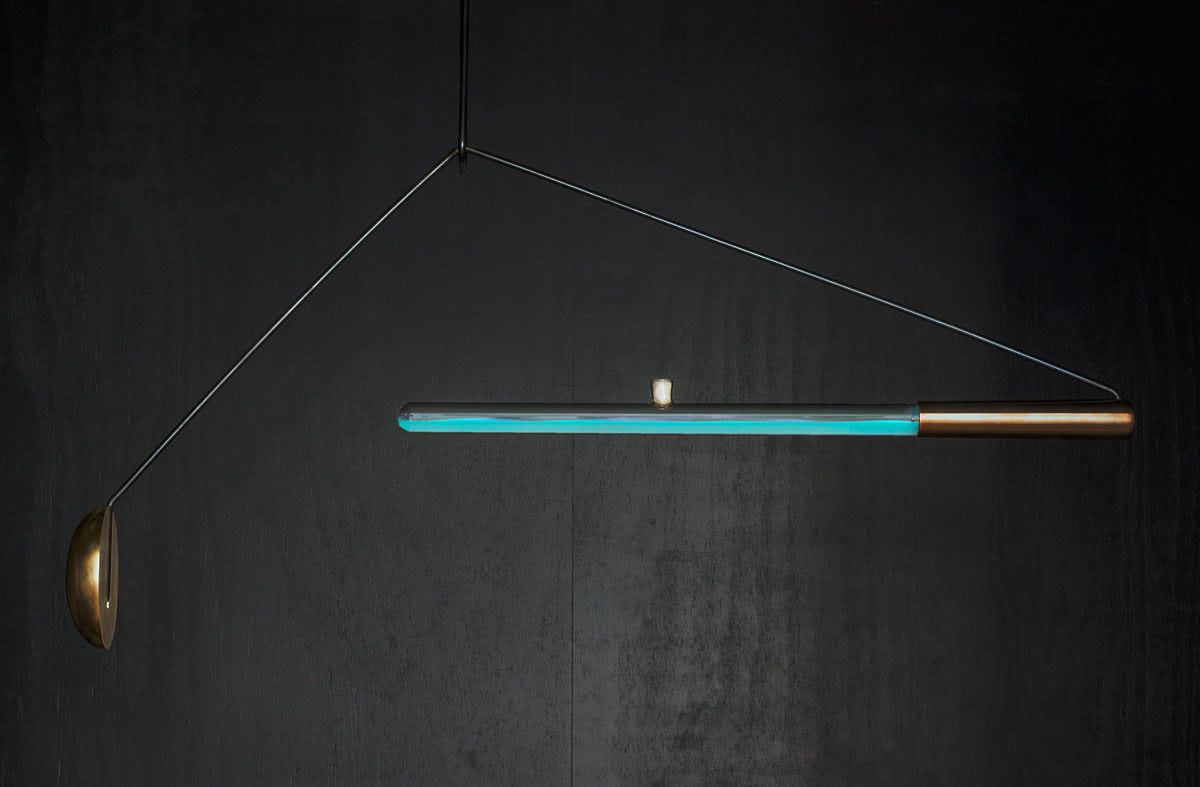 Ambio, glowing blue light emitted by bioluminescence
Ambio, glowing blue light emitted by bioluminescence
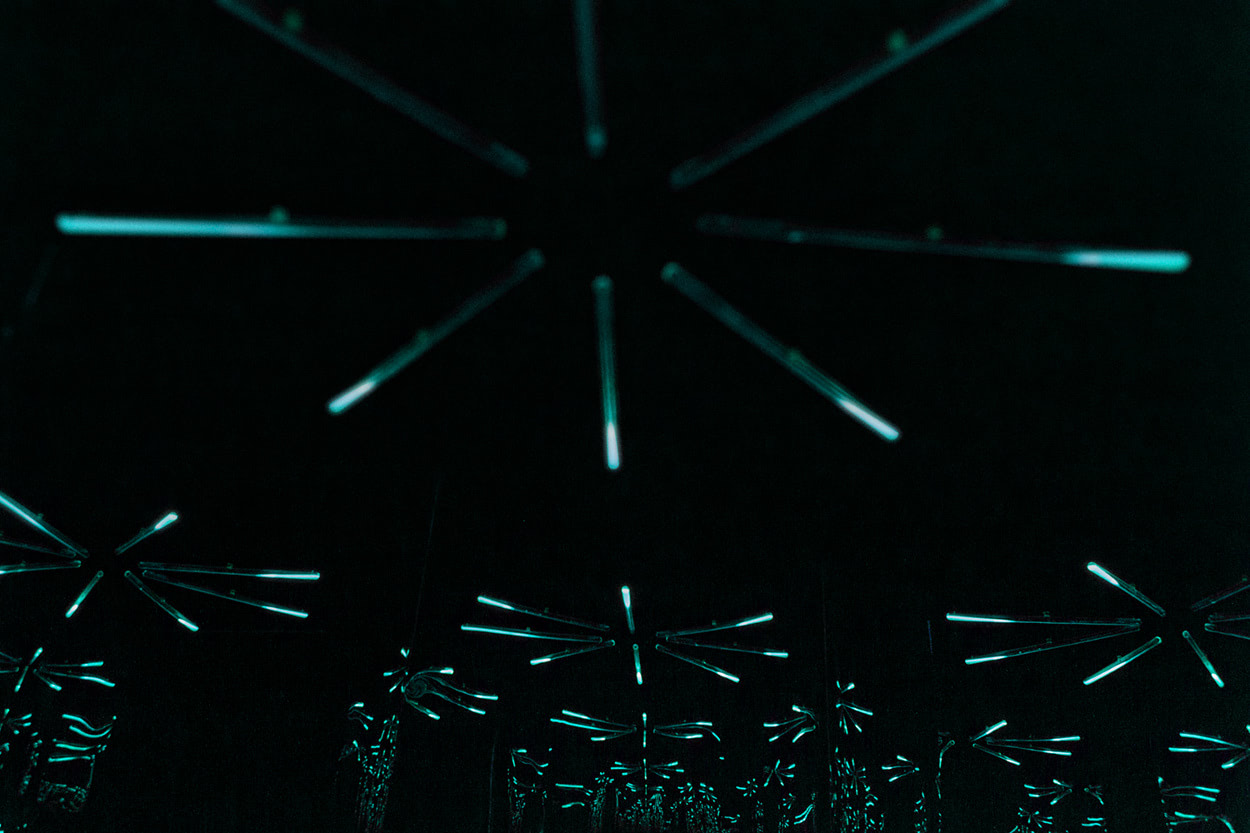 In continuing the Ambio project, Teresa created One Luminous Dot. In this installation, Ambio lamps were hanging all across the ceiling, endlessly reflected in a big space with mirrors, inciting the feeling of being deep in the ocean, looking up at the movements of the waves, or perhaps the surreality of space.
In continuing the Ambio project, Teresa created One Luminous Dot. In this installation, Ambio lamps were hanging all across the ceiling, endlessly reflected in a big space with mirrors, inciting the feeling of being deep in the ocean, looking up at the movements of the waves, or perhaps the surreality of space.
Designing a lamp that is 'alive' quickly stuck to Teresa: “As soon as I discovered that people liked the idea of a lamp that was ‘alive’ through bioluminescent bacteria, I started imagining a whole new generation, which would be much brighter, having people taking care of it at home.”
This aspect of care, needing to nurture the 'living' in the lamp, is an interaction that she explicitly includes in most of her designs. Teresa believes that, taking care of the things around us, we may end up finding them more valuable. “Some things we take for granted. If we push that button the light goes on. But it's already so magical that we have electricity flowing through the building,” the designer said. By taking care of something that's alive, in turn receiving light, we may both appreciate the power of nature as an energy source, and realize that we should not take technology (like light) for granted.
However, taking care of this lamp was kind of like taking care of a baby: “I realized that this project wasn’t really meant for a consumer, it had too many boundaries: the organisms were too complex.” While exhibiting her designs, maintaining such organisms was already a full undertaking: “I often gained help from two biotech students from the Delft University of Technology, and sometimes we had to build a small laboratory in my atelier. While exhibiting abroad we brought all the lab stuff into an AirBnB, recreating a little lab there."
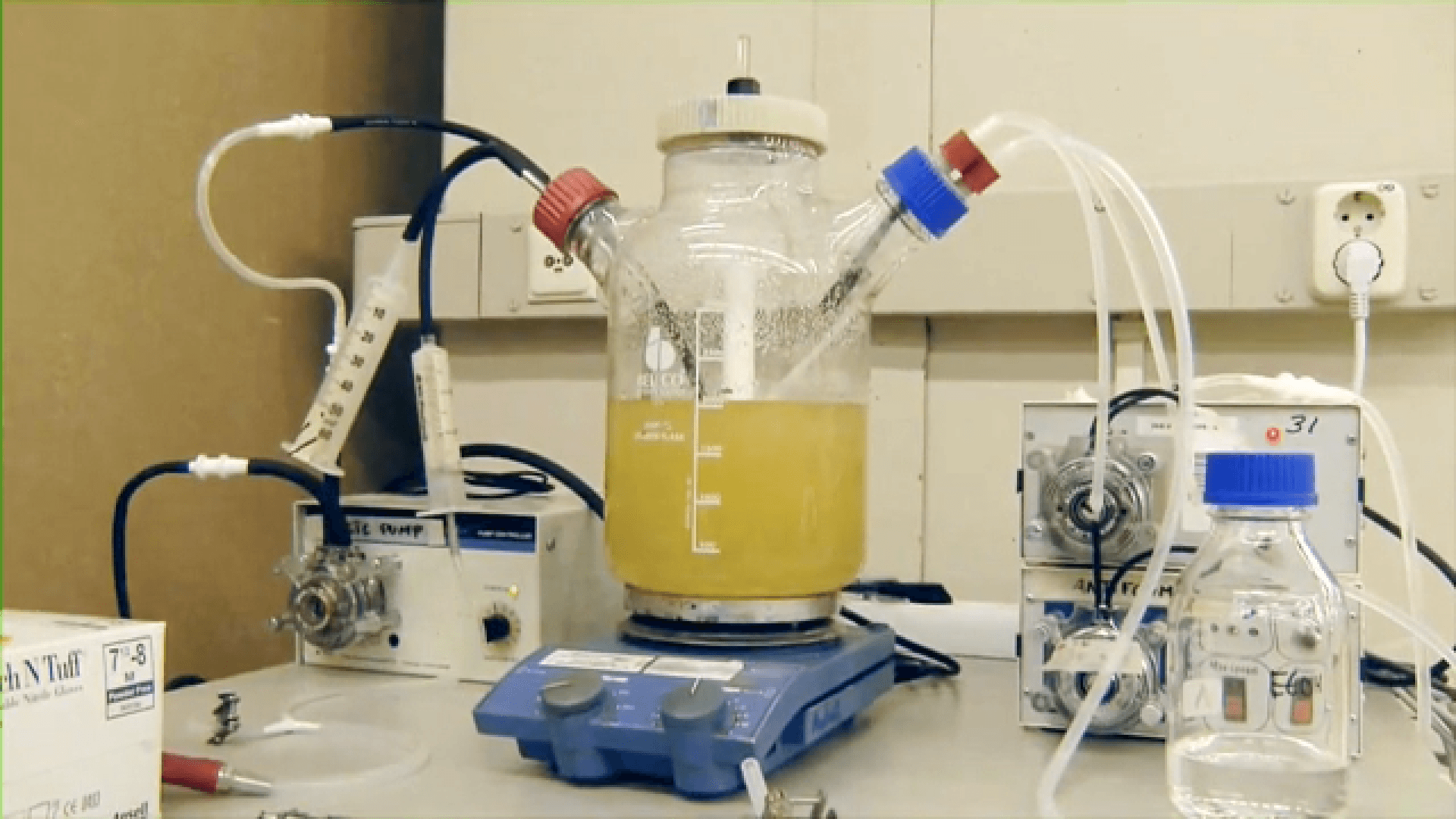 Teresas mobile 'living lab' to nurture the bioluminescence in the run towards exhibitions.
Teresas mobile 'living lab' to nurture the bioluminescence in the run towards exhibitions.
Sparks of life that bring you light
We fast-forward through Teresa’s portfolio, to arrive at her latest project, Spark of Life, bringing the living lamp a step closer towards a consumer-friendly version. A hanging lamp, with 4 glass compartments lacking an electricity plug. And don’t be fooled by the hint to a light bulb: this lamp is roughly the size of a soccer ball.
Moving beyond bioluminescence, this time Teresa chose another type of organism. “Spark of Life is powered by living organisms, but in this case the organisms are not directly emitting light themselves; they’re excreting electrons. The lamp channels these electrons in the connected electrical circuits to LEDs, providing you with an artificial light, made by living organisms. It's much less work to maintain such organisms as they're much stronger; this design needs to be fed with a teaspoon of acetate every two weeks, and some new water every month."
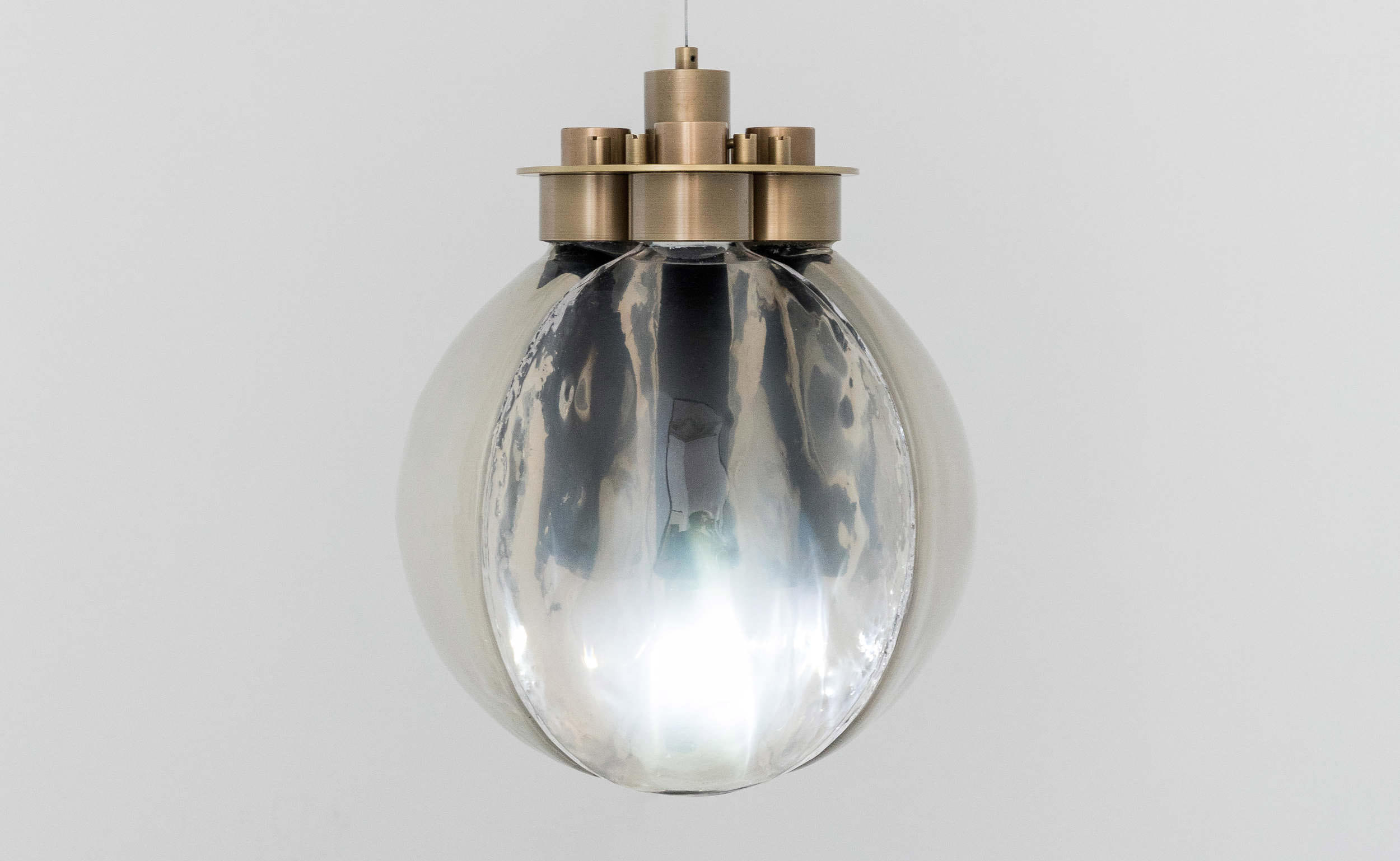
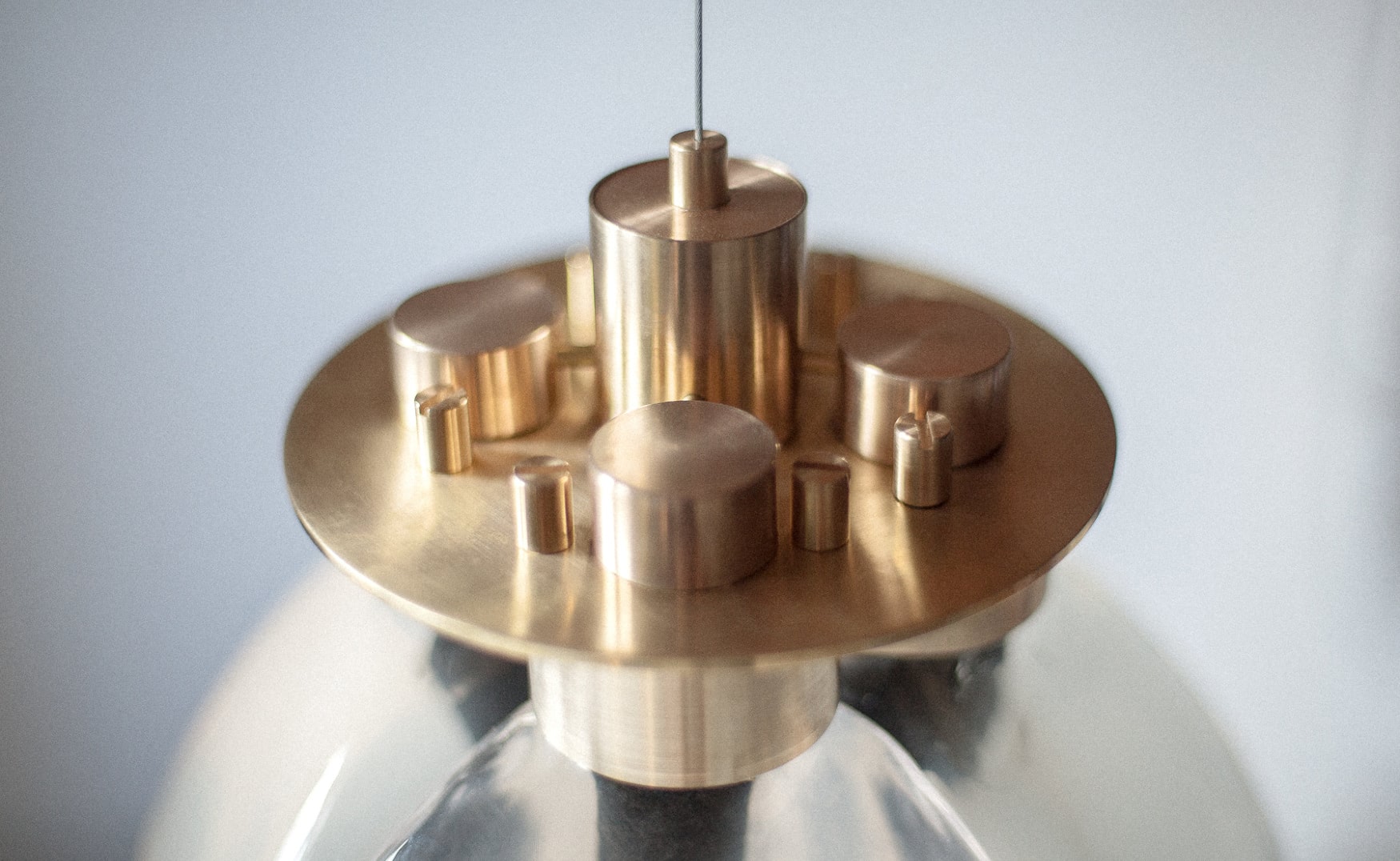 Spark of Life is home to ecosystems of electro active bacteria.
Spark of Life is home to ecosystems of electro active bacteria.
For the development of this lamp, Teresa collaborated with the University of Gent's laboratory, where scientists work with these organisms and knew the bacteria emits electrons, which in turn, could be harvested as an energy source. “However, they were surprised to learn that, using only one batch of bacteria, I managed to keep 4 LEDs alight for 24/7, for the duration of an entire year! They’d expected this to work, but perhaps for a few weeks.” Teresa explains. “When I first presented Spark of Life, the scientists brought their families to see the work. Their work is often too dense and scientific, which makes it is hard for them to talk about it at the dinner table with their kids. My design could be considered a small visualization of the power of these organisms.”
With Spark of Life, Teresa won the Keep an Eye grant, a price to stimulate recent alumni of the Design Academy Eindhoven. The price ensures Teresa to continue to develop the project towards a more consumer friendly product.
Bringing the next generation of natural light to your home
Teresa gives us a first peek at some models of the continuation of the Spark of Life. She’s now exploring how she may be using glass and reflecting materials to amplify the light of the LED’s. At current, the organisms themselves are not strong enough (yet) to light a whole room. What's more, up until now, the lamp does not have an “off”-switch.
“The organisms will be housed inside a separate reservoir, perhaps like an aquarium, in which the microbial fuel cell is generating energy from the electrons of the bacteria, making it easier to maintain as well. But, taking care of the lamp should be something like taking care of your plants. The idea is that the owners find a low-maintenance routine, like the ease with which you’d water your plants."
This project may finally be able to move from the exhibition room, to the living room. Here, she hopes that her designs incite conversation, or as Teresa put it: "becoming that one object in the home sparking interest."
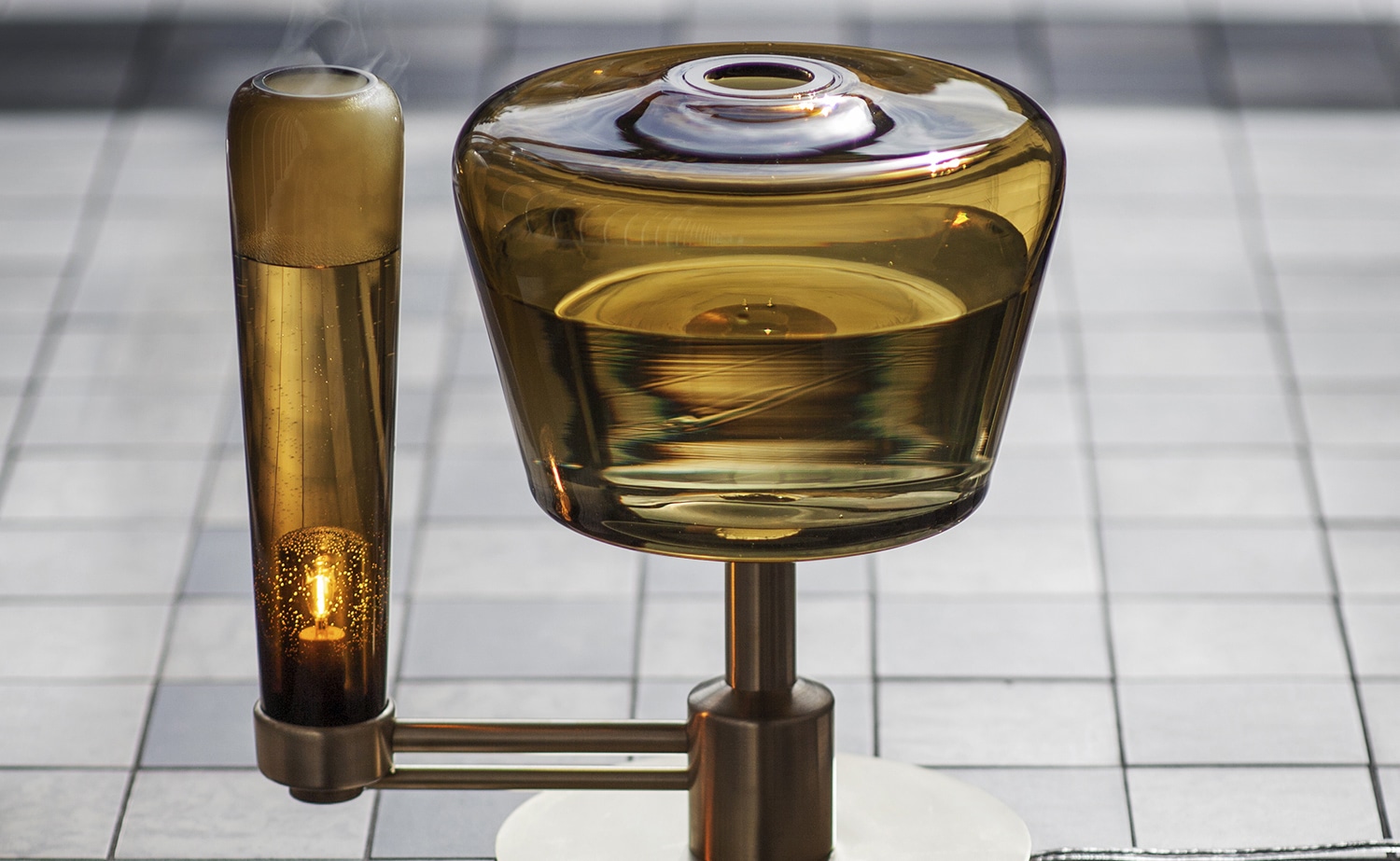 Lumist: Visualizing lost energy
Lumist: Visualizing lost energy
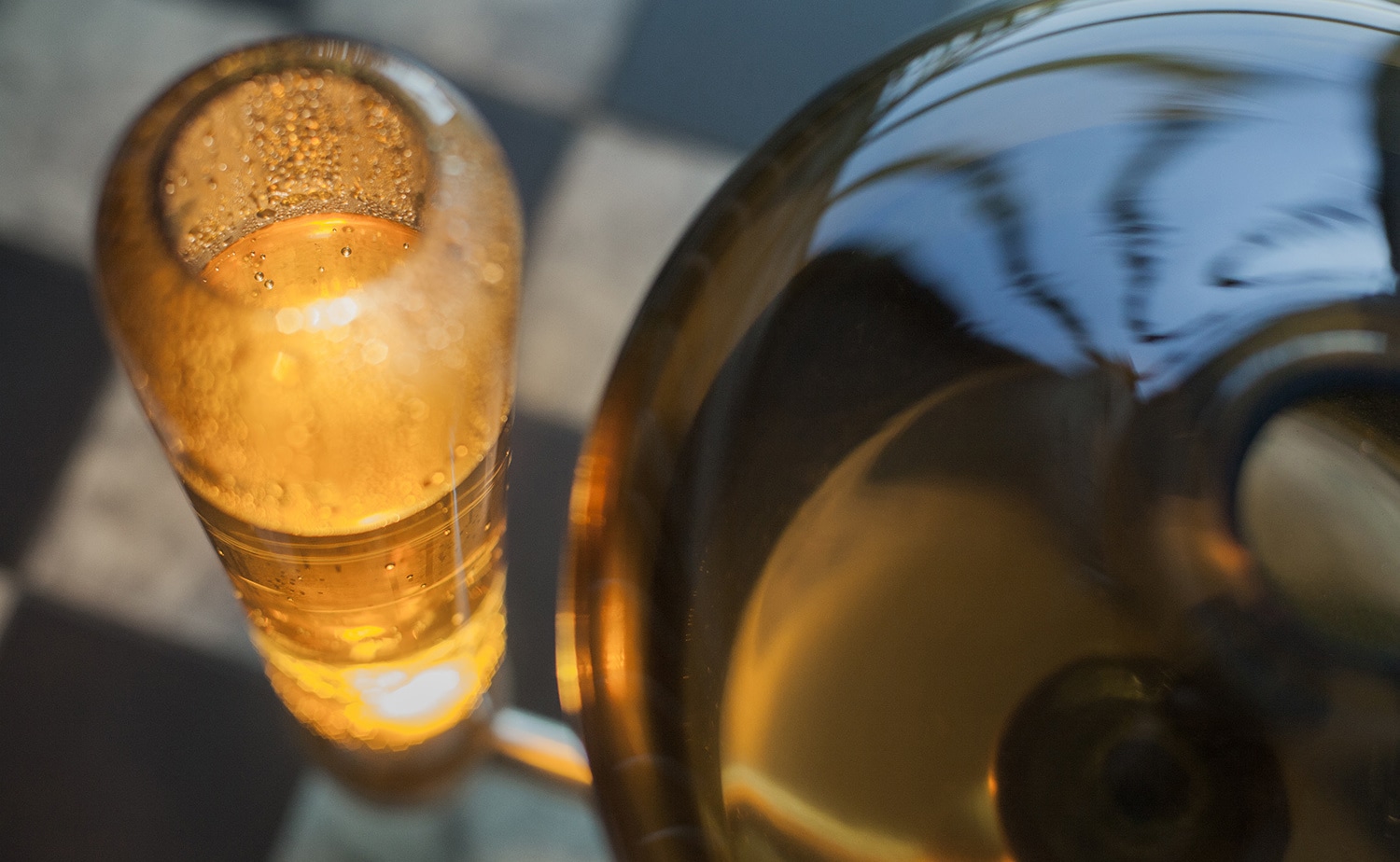 "Energy is a precious commodity, but often we don’t notice when it’s wasted. I looked for a way to use the heat lost by halogen lamps and created Lumist – a lamp and humidifier in one. The heat from the bulb keeps the surrounding water just under boiling point, and therefore causes the water to evaporate. More water is constantly provided by the adjacent reservoir. By capturing the contradictory traits of water and light in glass, I visualize this otherwise lost energy."
"Energy is a precious commodity, but often we don’t notice when it’s wasted. I looked for a way to use the heat lost by halogen lamps and created Lumist – a lamp and humidifier in one. The heat from the bulb keeps the surrounding water just under boiling point, and therefore causes the water to evaporate. More water is constantly provided by the adjacent reservoir. By capturing the contradictory traits of water and light in glass, I visualize this otherwise lost energy."
The power of design
Conversations, like the ones envisioned in her next design generation, are to inspire people to think about the hidden wonders of nature. According to Teresa, “there are many secrets in nature that remain almost unknown, and developments in the field of science often stay within the laboratory.”
“I like to take 'the scientific' that seems complicated from the outside, and bring this closer to the people.”
Spark of Life is an eloquent example of Teresa is opening these doors. “Electro active bacteria are not a new thing; they have been researched for over 20 years.” Scientific research in this field often has large goals, think cleaning up waste water, harvesting energy, or cleaning oil stains in the ocean. However, “these are complex goals that take time before they are implemented and can reach the people.” Teresa sees this as the gap where her designs come in. “My end result does not have to correlate with the end result of scientists.”
There are many secrets in nature that remain almost unknown
Design, to her, serves a particularly powerful tool to express the unknown. Comparing it to written words, the language of science, Teresa explains: “People oftentimes think that we can express everything by just speaking, but considering we have evolved with many more senses than just speaking and hearing, I think some things are not necessarily better - but richer - if they’re translated into a tangible form. You can reach that through design.”
A future of living light?
It appears to be a trend, perhaps even the next energy source: drawing energy from living things, that is. We see it in the work of ECO coin award winner of 2018's Sandra Rey from Glowee, who wants to use bioluminescence to light our streets, and in the practice of Ermi van Oers, who draws energy from plants to generate light. Although Teresa identifies with this trend, she takes a different approach: “I want to design an intimate experience with the person owning the lamp, and create something tactile and inspiring, nearly like an art piece”
I want to design an intimate experience with the person owning the lamp
Yet, whether or not bioluminescence will play a role in scaling up sustainable light sources in the future, is not certain to Teresa. “From my designs I have learnt that these organisms, even when modified, need lots of care and energy; I’m not sure if this can be managed on such large scales”. However, she doesn’t see this enough to criticize: “Sandra Rey wants to celebrate the power of nature, and present the beauty of bioluminescence and challenge its limits all the way; I’m with her!”
Natural forms of artificial light
To conclude, Teresa highlights how innovations in artificial light are starting to mimic the patterns of natural light. “We are realizing how the colors of light have an effect on our hormones. There's a natural cycle in your day; in the evening the light of the sun turns red, which works through to our hormones and gets us sleepy. In the morning the light is blue, waking us up. TL and LED lights to that end, can be blue or yellow, and influence our health as we are often exposed to such lights via our screens and in our work environments." Furthermore, our lighting systems in the future may resemble full-spectrum light. Back to the incandescent light?
In Teresa’s view, the future of light involves two things. Living lamps can fuse nature with artificial light, making our technological environment a bit more humane. And at the same time, artificial light is seeking to become more like natural light. “To have these two developments go hand in hand, is quite beautiful," Teresa says. "And it's going so fast! I believe we will get there, soon.”
_________________________
Looking for more interviews? Join NNN and we will keep you in the know on everything next nature, all around the world!
[mc4wp_form id="72385"]
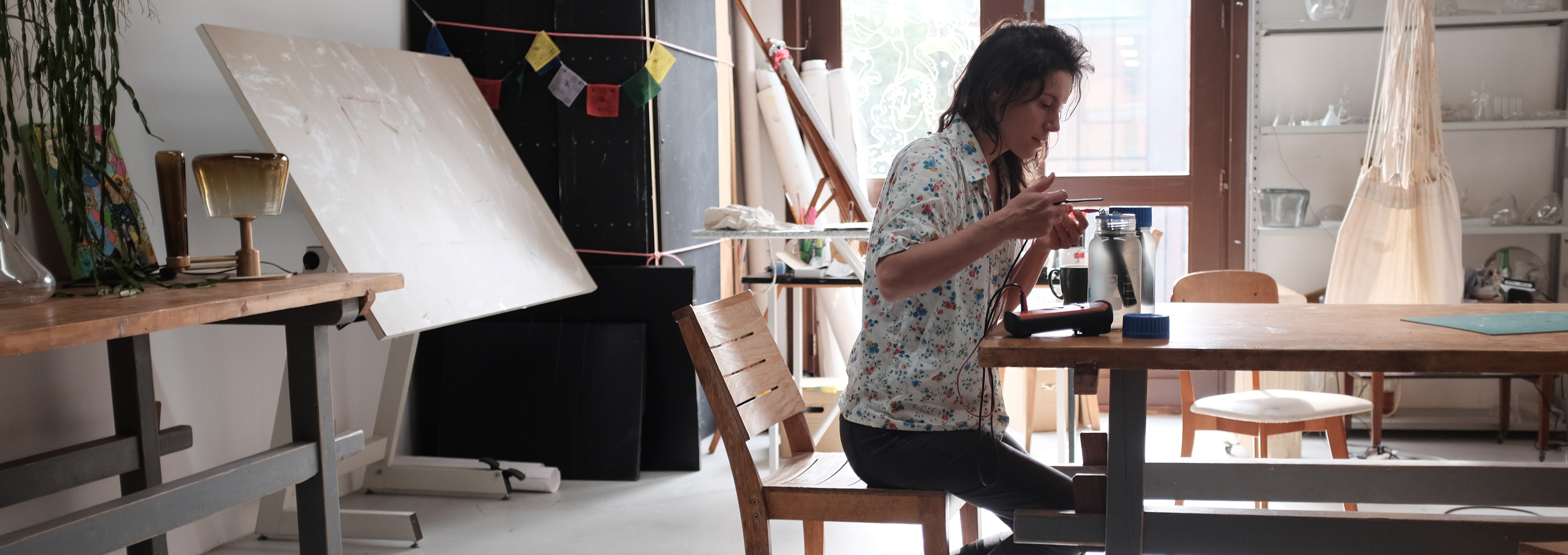
Share your thoughts and join the technology debate!
Be the first to comment